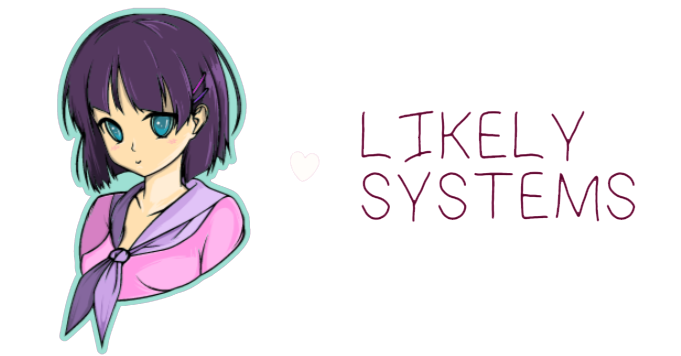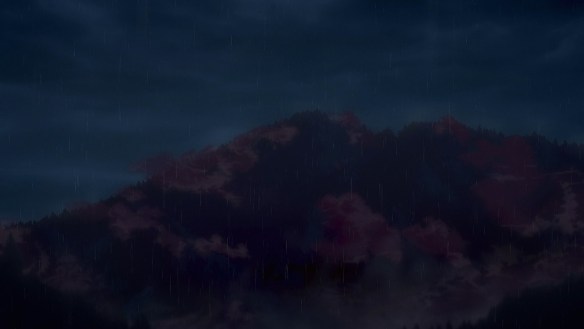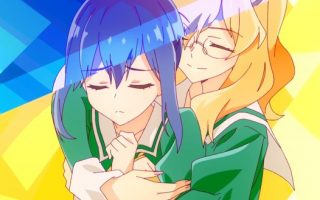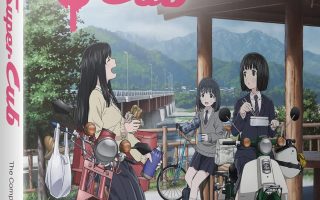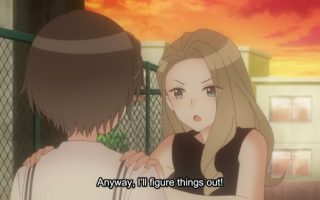Hello folks, and welcome back to Wrong Every Time. Today we’re embarking on a brand new adventure, as we explore the first episode of an ongoing production, The Summer Hikaru Died. Based on a manga by the whimsically aliased Mokumokuren, the story is apparently centered on two close friends, one of whom goes out into the woods alone and returns as a different creature entirely. It’s a classic horror template that I’m quite fond of, one that plays into both our often self-deluding maintenance of social propriety, as well the fundamental folk-horror allure of spirits within the wilderness, beings so wild that even to witness them might prompt terrible transformation.
Wendigos, werewolves, vampires, and vourdalaks all play in this conceptual space, which here seems combined with another favorite topic of mine: the steadily depopulating Japanese countryside, a persistent topic of animated drama which has furnished the narrative of productions like Rainbow Fireflies, Sakura Quest, and even Dagashi Kashi. So yeah, as a rabid fan of folk/cosmic horror and a sucker for melancholy pastoral dramas, I imagine there’ll be plenty for me to dig into here. Let’s get to it!
Episode 1
We open with rain falling over a shrouded mountain, the sound of a train engine churning in the background. An image that creates a strong sensory memory with a minimum of active animation, using sound design and the evocative silhouette of the mountain to great effect
Apparently it is January 2020 in Nisayama. In our own world this was the beginning of the plague years, but I doubt this show will be about that; we’re merely being tightly situated, creating a stronger impression of one specific person’s experience
Another smart use of the darkness to create movement into depth, as we follow our presumed protagonist running straight into the woods, with only the light of his flashlight to guide him. That light’s inability to create perspective or detail gives the production a bit of a cheat here, allowing them to make use of fairly limited CG backgrounds
Manipulation of light and shadow is one of the base fundamentals of visual horror storytelling. The darkness implies vulnerability, stoking a primal fear in us that requires no further explanation; if a film or show can be shot in such a way that it feels like the darkness is actively pursuing or encroaching on the characters, anxiety will naturally result. And beyond that, darkness and ambiguity stoke the human imagination; we are always far more afraid of what we can imagine than what we can actually see, because our imaginations can call upon and realize our own personal fears, whatever we least wish to discover
Scenes of the rescue operation are contrasted against sequences of whatever presumed creature claimed Hikaru expanding, dividing into multiple cells
Its catalyst appears to be some kind of wooden mask, and we also see his pursuer come across a tree warped into the shape of a female body. Folk horror frequently plays in this space, treating humanity not as a unique conqueror of our world, but just one more creature that has danced perhaps a half-step further from the natural order, yet which can always be recalled to the fold by a sufficient, primal force. Like cosmic horror, folk horror posits that we are very small creatures surrounded by much larger forces, most of which we can barely even recognize, save through the rituals enacted by those who know them better. And this ignorance is a blessing, for if we were to see the true faces of the natural world, we would surely be altered beyond recognition in the process
Another efficient yet ambitious cut, this time moving out of depth as we pan out from Hikaru’s body, through layers of darkened foliage. Darkness continues to be an effective tool, maintaining the proper tone while concealing the seams of these visual flourishes
We then jump to July of the same year, with cicadas and saturated lighting introducing us to your classic summer in Japan. More efficiency in setting the mood here, with a variety of establishing shots of the village being overlaid with kids muttering about getting ice cream. Actually animating those kids would be a lot of effort for a little gain; the important thing here is establishing the tone of the village, as well as its visual highlights
Also interesting that we’re now in July, but Hikaru had his accident in January. So was Hikaru slowly consumed over time, or is there some other reason this is “the summer Hikaru died?” My immediate assumption is that the title is actually referring to how our lead was ultimately forced to kill “Hikaru,” or whatever now controls him
Our two leads share ramune drinks while the protagonist comments on Hikaru’s disappearance, how he was gone on the mountain for a whole week, but doesn’t remember anything
Hikaru’s pupils are dyed the red of the creature that claimed him
The cinematography continues to divide the pair of them, consistently offering layouts that prevent them from appearing together. Our protagonist’s distrust of Hikaru is thus conveyed visually, all while the cicadas continue to emphasize the punishing summer heat. Horror is like ninety percent atmosphere, and this production seems to understand that perfectly
The summer light fades as our lead Yoshiki asks the key question, saying “you’re not really Hikaru, are you?”
And thus the creature reveals itself, a morphing form that seems like an array of massive cells. Too far from a human form to pretend it has any kinship with us
“Even if he’s a fake, I want him to stay.” A clever fusion here, taking the classic narrative of a doppelganger replacing a loved one and twisting it into a meditation on grief, on the difficulty of letting go
The old Hikaru is presented in letterboxed formatting in Yoshiki’s memories, like a treasured film he replays again and again. I can imagine why – with this new Hikaru walking around every day, I imagine he’s trying hard not to let this Hikaru fully replace his own, to remember what made his own Hikaru distinct
Man, what a demented situation! Grieving his friend while simultaneously dealing with his replacement, a doppelganger who’s always somewhat off in his mannerisms, and who more importantly will never grow or change, never challenge Yoshiki in the way that made Hikaru such an important friend to him in the first place. A living photograph
There’s an emphasis on food imagery here, and not in a cozy way – it’s more like a consistent reminder that we all exist to consume, as demonstrated by the ants sipping on sugar-water in the previous scene
“I don’t care what you are. It’s better than not having you here.” Yep, a story about letting go with a particularly nasty twist. In that light, “The Summer Hikaru Died” could also refer to Yoshiki finally accepting his death
We are introduced to a man named Tanaka, who I assume is some kind of apparition hunter
We cut to a perspective shot as he examines this apartment, creating both a greater sense of vulnerability and a sense of dynamism without any additional animation. Director Ryohei Takeshita is already proving a master of turning production limitations into genuine strengths
He finds some sort of beast conjoined with the closet wall, calling out for “Mommy.” His destruction of this creature is contrasted against our high schoolers singing about youth and dreams, the carefree veneer of youth and the town’s dark secrets in one
Tanaka’s company has apparently been searching for something for “hundreds of years”
We see the couple who lived in this apartment clutching each other and sobbing. It seems likely that, like Yoshiki, they had actually come to appreciate this apparition’s presence in their life, perhaps as the replacement for a lost child. It is thus the apparition hunters who are presented as cold and unfeeling, foregoing human sentimentality in favor of a policy of heartless extermination
Hikaru’s doppelganger is moved by their in-class movie; though Hikaru’s body has seen it before, this is the first time for him personally. These doppelgangers certainly seem capable of human emotion, not just as imitation, but as a felt experience
Some deft use of rotoscoping for these girls in the distance, with their forms distorted enough that it feels more fluid than distracting
Love all these little fragments of other student lives we see in passing – a concert group practicing, girls bickering, friends making plans. This production is demonstrating that you don’t need Kyoto Animation-tier resources to create an environment that feels alive and full of independent stories
The trick is that the show isn’t being cynical about any of this; it’s earnestly celebrating these lives, even as it sculpts its own narrative in the background
More focus on bodily consumption as our leads each eat a croquet, the camera actually following the croquet between Hikaru’s teeth. Thus a simple gag is turned quietly menacing
“I can recall the memories perfectly, but not the actual experiences.” I appreciate that we’re not wading through dramatic irony through the first few episodes, and that Yoshiki actually understands this situation from the start
Hikaru’s doppelganger isn’t certain what exactly he is, beyond some kind of monster. Regardless, a local cat immediately recognizes him as a threat
Yoshiki says he’s “too easy on people, most of all himself,” presumably speaking of how easily he let himself embrace this false Hikaru
There is something fundamentally wrong about this Hikaru, something that animals can easily notice, but which humans can only grasp through careful study or unconsidered, instinctual responses. We see this as Yoshiki and Hikaru ride a bike behind a woman in town, who feels that animal-instinct tug of a predator in her vicinity
Yoshiki’s composure almost breaks as well, his body screaming at him that he’s in danger, before his grief once again takes the reins. The situation is hammered in by a cut to a spider in its web
An old woman also seems to recognize Hikaru as an incarnation of “Nonoki-sama,” some kind of mountain god. More focus on teeth and consumption, emphasizing her saliva
Excellent use of the summer sun; at this point, the entire town is saturated in the red of Nonoki’s eyes
And when he says that he does indeed like Yoshiki, half of his face is entirely shadowed, utterly unreadable. God damn they’re using lighting well here!
Yoshiki tries to ignore his parents’ fighting while Nonoki goes to deal with the old woman. A painful contrast of mundane and supernatural horrors
Ooh, love this use of altered newspaper photography just before she is taken. A choice that fits this subtly altered world quite well
And Done
Damn, what a premiere! I got everything I was hoping for and more, with plentiful alluring folk horror flourishes throughout, alongside a clear fundamental understanding of how exactly horror works, how implication and distortion are often far more effective than outright violent revelation. Additionally, the show is working equally well as a portrait of rural adolescent life, capturing both the surface atmosphere and underlying secrets of Yoshiki’s life with grace. And with such economic direction evoking such a powerful dramatic effect, I don’t even really have to worry about any degradation of the animation quality – so long as the storyboarding fundamentals stay this intelligent, the show will continue to be a visual delight. The inevitability of death and intractability of grief, the slow decay of life in a rural village, the ancient secrets and malevolent forces of the deep woods – The Summer Hikaru Died is balancing its variables such that they all inform and elevate each other, presenting a gripping portrait of childhood’s end. I’ll definitely be back soon!
This article was made possible by reader support. Thank you all for all that you do.
